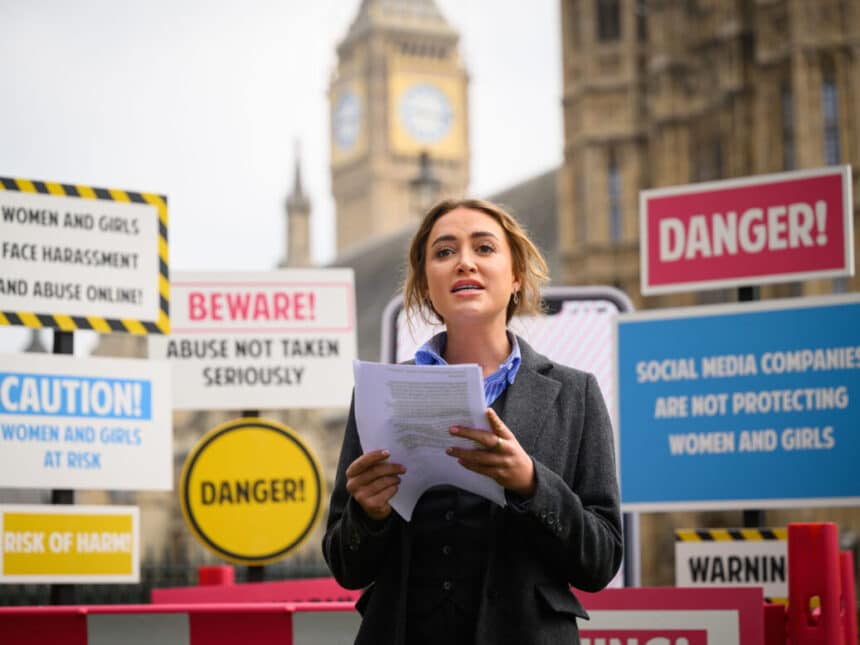Every few weeks, another headline pops up about a platform getting fined, a video being blocked, or teens losing access to a favorite app. Behind many of those stories sit the New “Digital Safety” Laws, a growing web of rules that decide what can stay online and what has to disappear.
In 2025, these rules became much stricter in many places. The EU is enforcing the Digital Services Act (DSA). The UK is rolling out the Online Safety Act. Australia is pushing minimum ages for social media. Brazil has passed its ECA Digital to protect kids online. Ireland and several other countries are tightening age checks for porn and other adult sites.
These laws do not all say the same thing, and they do not all apply everywhere. A post that is allowed in one country might be blocked in another. This guide gives a clear overview of the main types of content that can now get users in trouble, so everyday people can post more safely. It is general information, not legal advice.
What Are the New “Digital Safety” Laws and Why Were They Created?
Digital safety laws are rules that tell platforms and users what is okay online. They usually do three main things:
- Tell platforms what kind of content they must remove
- Set special protections for kids and teens
- Put limits on what regular users can legally post or share
Recent examples include:
- EU Digital Services Act (DSA), which forces big platforms to check for illegal and harmful content, run risk reports, and protect minors
- UK Online Safety Act, which adds safety duties for platforms and rules on how they must handle harmful content
- Australia’s social media minimum age rules, which aim to keep young teens off major platforms or require parental consent
- Brazil’s ECA Digital, a new statute focused on protecting children’s data and content online
- Age-check rules in Ireland, used for porn sites and some other adult services
Governments say these laws are a response to real problems: child abuse material, suicide encouragement, hate campaigns, deepfake pornography, and platforms that looked the other way for too long.
How These Laws Change Everyday Posting
For ordinary users, life online feels a bit different:
- More posts are flagged, hidden, or removed
- Some sites suddenly ask for ID or age checks
- Warnings, labels, and “this content might be harmful” screens appear more often
Because the DSA and similar laws allow huge fines, up to 6 percent of a company’s global revenue in the EU, platforms are more cautious. If a post is even close to the line, some companies would rather delete it quickly than risk a long fight with regulators.
That means a post that might have been ignored a few years ago can now lead to a warning, a temporary ban, or even a permanent account loss.
Different Countries, Different Rules
There is no single global rulebook. Patterns do show up, though:
- The EU focuses heavily on illegal content and big systemic risks, and on how very large platforms manage harm at scale
- The UK puts strong weight on keeping children safe from pornography, grooming, and the encouragement of self-harm
- Australia and parts of Asia are pushing age bans or strict age checks, especially for social media and some online games
- Brazil’s ECA Digital focuses on children’s data, images, and AI deepfakes involving minors
In late 2025, for example, the European Parliament backed a resolution that supports a social media ban for under-16s unless parents opt in. Readers can see more in the coverage of the European Parliament’s call for a social media ban on under-16s at The Guardian.
Every user should remember: the rules that matter are the ones where they live, and sometimes also where the platform is based.
Types of Content You Often Cannot Post Under New “Digital Safety” Laws
While details change by country, several categories are under heavy fire almost everywhere.
Clearly Illegal Content: Crime, Terror, and Child Abuse
Anything that is a serious crime offline is almost always banned online, with extra pressure for fast removal. That usually covers:
- Child sexual abuse material (CSAM)
- Terrorist propaganda and recruitment
- Detailed instructions for serious crimes like bomb-making
Under the EU DSA, very large platforms must act quickly when authorities flag such content and must show they have strong systems to detect and deal with it. Simply saving, sharing, resharing, or forwarding this material can be a serious crime in many places, even if the user says they did not create it.
Teenagers sometimes treat shocking content like a dark meme or a dare. Under these laws, that “joke share” can cross into criminal behavior.
Extremist and Hate Content That Can Get Users Fined or Banned
Many countries are tightening rules on:
- Use of extremist symbols
- Support for banned organizations
- Posts praising or encouraging violence against groups
Some states, such as Russia, have raised fines for spreading extremist material or “rehabilitating” banned groups. In the EU, codes of practice on disinformation and illegal hate speech are now linked with DSA enforcement, which adds more pressure on platforms to remove such posts.
Users who post slurs along with calls for violence, or who share logos and slogans of banned movements with praise, might face more than platform bans. In some cases, they can be investigated or fined.
AI Deepfakes and Misuse of Other People’s Faces and Data
Deepfakes are AI-made images, audio, or videos that look real but are fake. They can copy a person’s face, voice, or body in a scene they were never in.
New laws are very concerned with deepfakes that:
- Sexualize someone without consent
- Bully or harass someone, especially kids
- Trick others with fake “confessions,” crimes, or scandals
Brazil’s ECA Digital is one of the clearest examples. It treats the misuse of children’s images and data as a serious offense, especially if AI tools are involved. A detailed explanation of this law is available in the article on Brazil’s Digital ECA protecting minors online at Global Policy Watch.
In many places, sharing a sexual deepfake of a classmate or public figure is treated like non-consensual porn or harassment. Even if a user did not create the fake, reposting it can still cause legal problems.
Sexual Content, Pornography, and Paid Sexual Services Online
Rules around adult content are changing fast.
Common trends include:
- Mandatory age checks before viewing porn
- Stronger action against “revenge porn.”
- Tougher rules for buying or selling sexual services online
The UK and Ireland are moving toward strict age verification for porn sites. Some platforms already block access if a user is under 18 or cannot pass an age check. Sweden treats buying sexual services, including through digital ads, as a crime in many cases.
Sharing private sexual images of another person without consent is illegal in many countries, and penalties keep rising. Even legal adult content may only be allowed behind heavy age gates.
Gambling, AI Therapy, and Other Risky Services
Not all digital safety rules are about photos and videos. Some target services can harm users’ money or mental health.
Examples include:
- Online gambling sites or betting tips aimed at minors
- Unlicensed “AI therapists” that claim to treat mental health problems
- Health or investment tools that pretend to be expert services without a license
In places like the Philippines, regulators are examining online gambling more closely. In parts of the United States, such as Illinois, lawmakers have raised concerns about unregulated AI therapy apps, especially those used by young people.
Advertising or pushing these risky services can draw legal attention, particularly when the audience includes minors or vulnerable users.
What Content Is Restricted or Age-Gated Under Digital Safety Rules?
Not all content is banned outright. A lot of it is still allowed for adults but hidden from kids or shown with extra protections.
Age-Restricted Platforms and Social Media Minimum Ages
Some laws are moving toward a clear rule: no major social media accounts for under-16s, except with verified parental consent.
Australia has discussed and drafted measures that would:
- Block users under a set age from opening accounts
- Require strong age verification checks
- Give parents more control over underage accounts
In the EU, members of Parliament have gone further by calling for an EU-wide digital minimum age of 16 for social media, video-sharing platforms, and even some AI tools. The press release on EU measures to make online services safer for minors on the European Parliament site explains this push in more detail: New EU measures needed to make online services safer for minors.
For teens, this can mean sudden account blocks, demands for ID, or surprise requests for parental consent on apps they have used for years.
Adult Content, Violence, and Self-Harm Material for Younger Users
Many digital safety laws require platforms to keep minors away from certain topics or at least reduce how often they see them. That often includes:
- Pornography and explicit sexual content
- Graphic violence, including some war and crime clips
- Content that promotes self-harm, suicide, or extreme dieting
In practice, this means:
- More “sensitive content” warnings
- Filters that blur or hide images until someone taps through
- Searches that show fewer results for certain keywords on under-18 accounts
Adults may still be able to see some of this content, but younger users will face many more blocks and warnings.
Data and Privacy Limits for Kids’ Photos and Personal Details
A simple birthday photo in front of a school gate might feel harmless. Under newer laws, it is data about a child, their age, and where they spend time.
Rules like Brazil’s ECA Digital, along with EU and UK child privacy laws, push platforms to:
- Collect less data about kids
- Limit how long they keep that data
- Stop using kids’ data to train AI without clear safeguards
Parents and relatives who share photos, names, school uniforms, or locations of minors may see platforms add warnings or privacy tips. Even if something feels normal, such as posting a class picture, it is safer to think twice and limit how much personal detail goes online.
Penalties, Platform Enforcement, and How to Avoid Getting in Trouble
Behind the apps, regulators and companies are treating digital safety as a serious issue, with numbers that can look scary.
Fines, Account Bans, and Criminal Charges
Penalties vary a lot, but a rough pattern is clear:
- Huge fines for platforms. Under the DSA, big companies can face fines up to 6 percent of their global turnover. Brazil’s ECA Digital allows fines up to 50 million reais or 10 percent of a company’s revenue in serious cases.
- Criminal charges for severe user behavior. Sharing child sexual abuse material, posting revenge porn, or supporting terrorism can lead to police cases in many countries.
- Account-level sanctions. For lower-level harms, users usually face warnings, post removal, temporary suspensions, or permanent bans.
Most readers will never see the inside of a courtroom over a post. The real daily risk is losing accounts, reputation, or access to communities.
How Platforms Are Policing Posts Under the New Rules
To keep regulators happy, platforms are mixing several tools:
- AI systems that scan text, videos, and images for risky content
- Human reviewers who check reported posts
- Transparency reports and audits to show what is being removed
The EU DSA and UK Online Safety Act both push large platforms to run regular risk assessments and prove they are taking action. This pressure can lead to mistakes, where harmless satire, art, or political discussion is removed.
Some platforms now offer appeal tools, although they often sit in hidden menus. Users can challenge takedowns, but the process and success rates differ from site to site.
For a high-level view of how different regions are tightening rules, readers can review the Global Digital Policy Roundup at Digital Policy Alert.
Simple Posting Habits to Stay Safer Under Digital Safety Laws
A few simple habits can greatly lower the risk of trouble:
- Skip anything illegal or close to illegal, such as crime tutorials, terror praise, or obvious hate content.
- Get consent before posting photos or videos that clearly show someone else, especially kids.
- Avoid sharing deepfakes that sexualize, bully, or mislead, and label AI edits where allowed.
- Think about who might see a post, including kids, teachers, or future employers.
- Read the safety and reporting sections of favorite apps at least once, and check them again when laws change.
If a post feels cruel, invasive, or risky in a gut sense, it is usually safer not to share it.
Will These Digital Safety Laws Change Free Speech Online?
Digital safety rules sit right in the middle of a big argument. One side fears censorship and over-blocking. The other side points to very real harms to kids and vulnerable people if nothing changes.
Finding the Balance Between Safety and Speaking Freely
Most governments say their goal is to remove clearly harmful content, not normal political opinions or personal views. In practice, the line is messy.
When platforms face enormous fines, they may choose to remove borderline posts rather than argue. That can chill speech, especially for activists, minority groups, or people who share controversial art or humor.
Users who want to protect their freedom to speak can still:
- Criticize governments, companies, or ideas
- Argue strongly about politics or culture
- Share satire and memes, as long as these do not cross into threats, hate, or targeted harassment
The key is to avoid sharing private information, inciting violence, or attacking entire groups in a way that matches legal hate speech definitions.
How Users Can Adapt as Rules Keep Changing
Digital safety rules are not frozen. AI tools, new apps, and fresh scandals keep pushing lawmakers to act.
To keep up, it helps if users:
- Follow trusted news sources that cover tech and digital policy
- Visit safety and privacy settings on their main apps a few times each year
- Talk with kids and teens in their lives about what is okay to share
- Treat AI tools, filters, and generators with the same care as real cameras and microphones
What feels normal today, such as sharing a quick deepfake joke or reposting a risky meme, may be treated very differently in a year or two.
Conclusion
The New “Digital Safety” Laws are reshaping daily life online. Across regions, they share common goals: protect kids, reduce clear harm, and make platforms take real responsibility for what they host. That means more bans on obviously harmful content, stricter rules for sexual and extremist material, and tighter age-based limits for social media and adult sites.
The rules differ by country, and they will keep changing, but one thing stays steady: users who think before they post, respect other people’s privacy, and avoid cruel or illegal content are far less likely to run into trouble. Social media can still be fun and creative. With a little extra care, readers can enjoy that space while staying on the safe side of the law and helping make the internet kinder for everyone.













